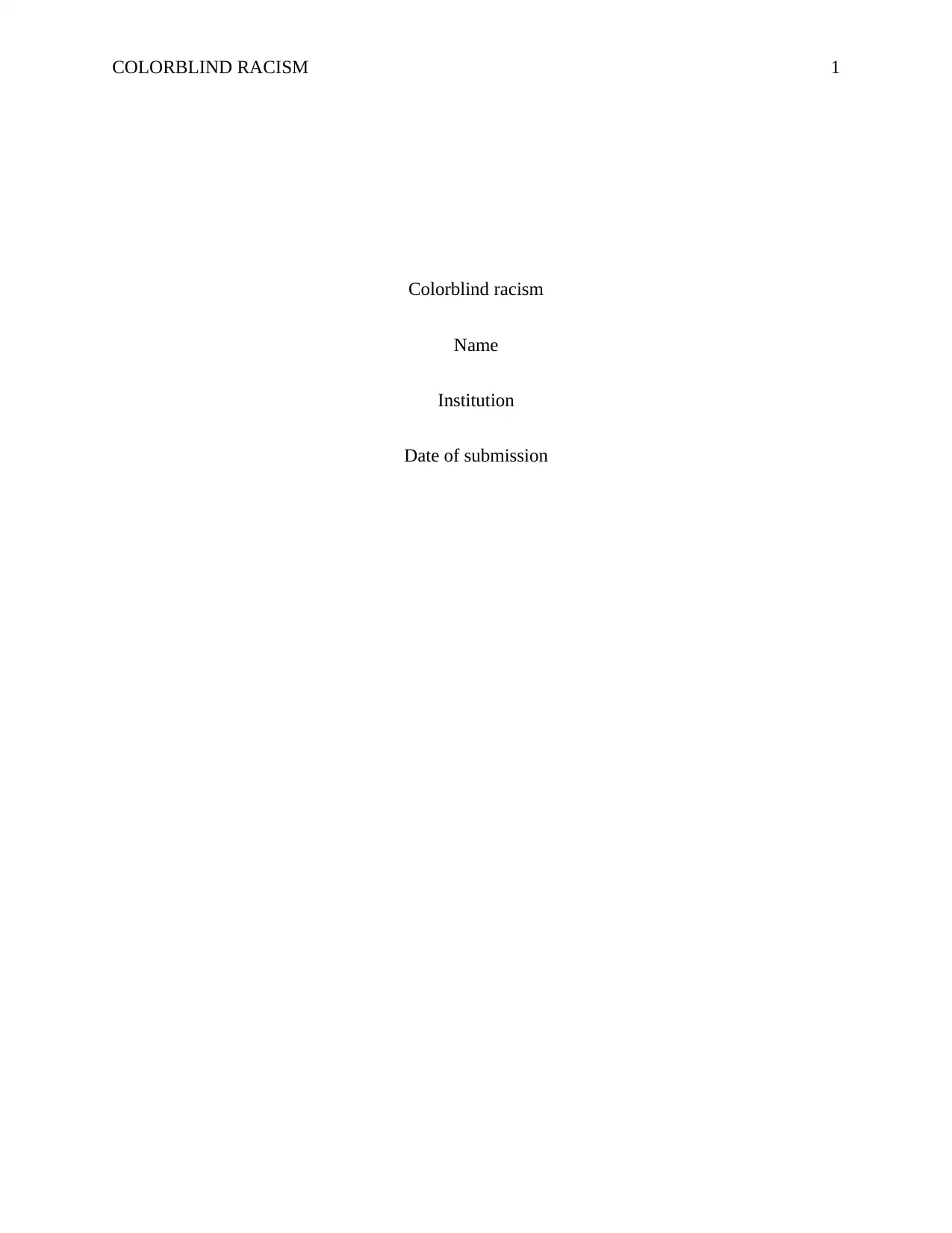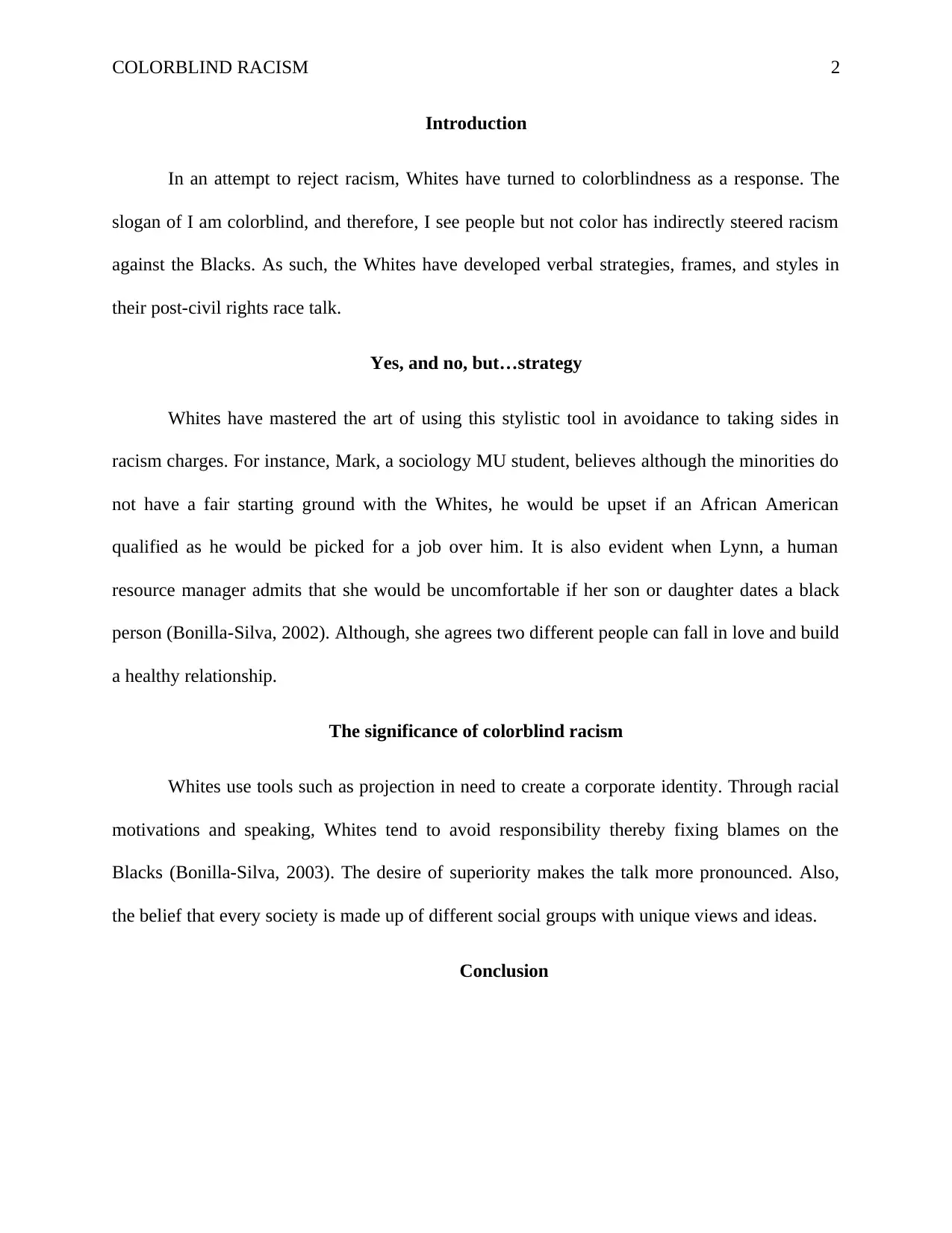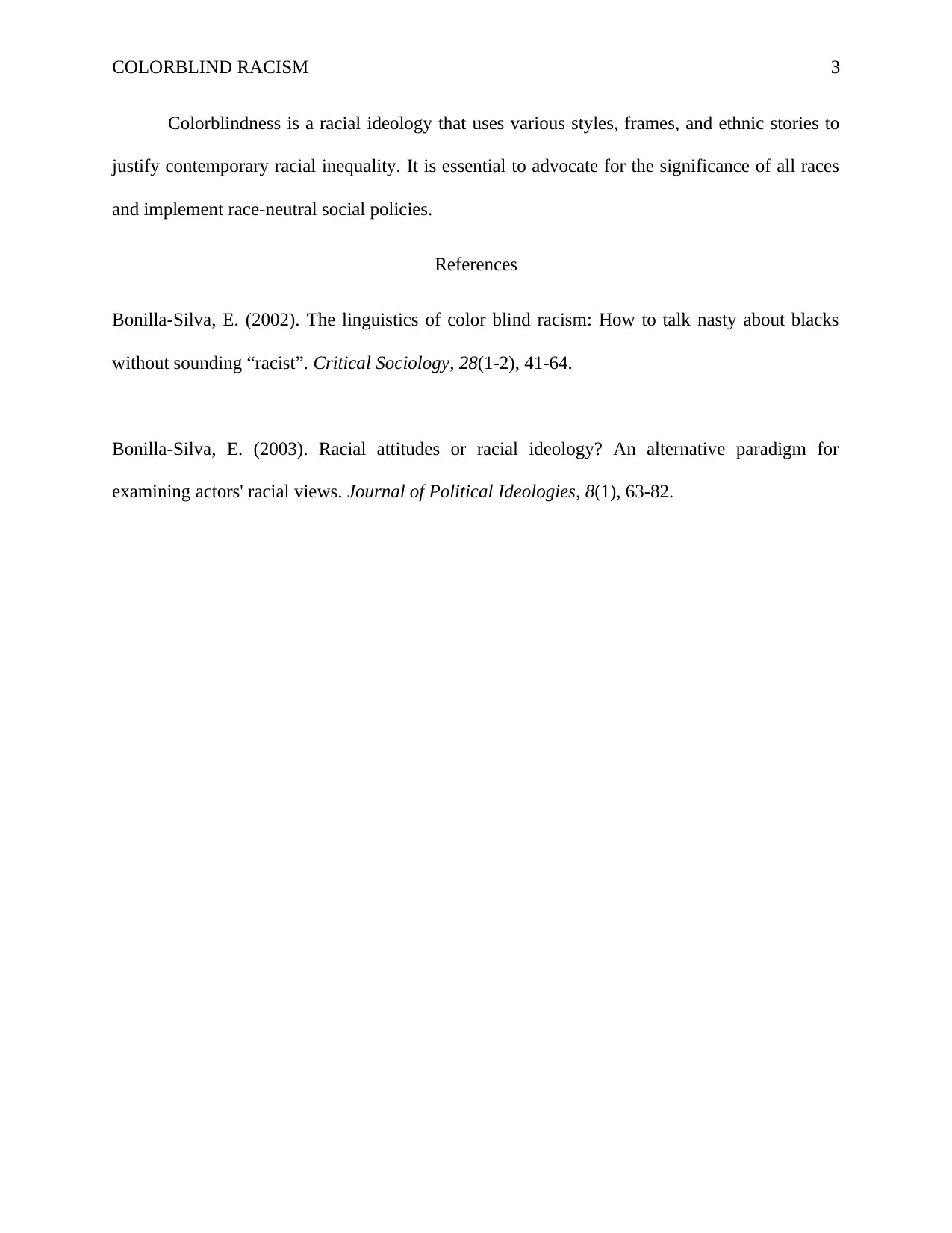Colorblind Racism: Understanding the Modern Phenomenon
VerifiedAdded on 2021/04/24
|3
|377
|38
Essay
AI Summary
This essay examines the concept of colorblind racism, exploring how it functions as a modern form of racial bias. The essay delves into the strategies and ideologies used to perpetuate racial inequality, including the use of verbal tools and avoidance tactics. It analyzes the role of colorblindness in contemporary society, the perspectives of Whites, and the impact of these attitudes on race relations. The assignment also discusses how racial ideologies and social structures contribute to the perpetuation of racial inequality and suggests the significance of all races and implementing race-neutral social policies.
1 out of 3





![[object Object]](/_next/static/media/star-bottom.7253800d.svg)